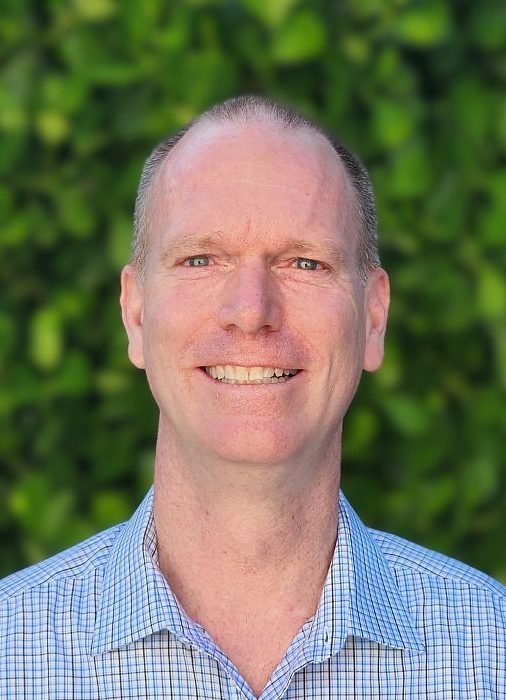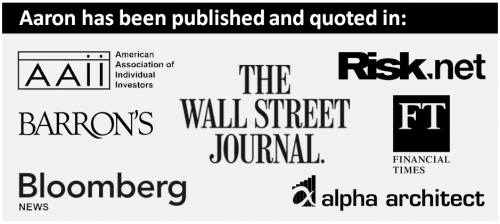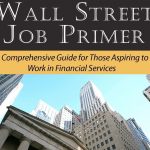Trust and competence are critical ingredients for stewardship of your wealth. The absence of either can pose unnecessary risks by compromising the quality of the advice you receive or the investment performance you experience. It is also important to achieve the right balance of communication and interaction to help you understand your investments, manage expectations, and maintain confidence in your financial well-being. That is why I became a fiduciary advisor and my conservative approach to wealth management emphasizes service and simplicity. Please click on the tabs below to learn about my firm and how I use these four factors to deliver true peace of mind.
Aaron Bio (meet Aaron  )
)

Unlike most investment advisors, Aaron's background is in research - not sales. While working for two leading investment banks in New York and London, Aaron built and managed global teams to provide investment and risk management services for the firms' top clients. He has been published and quoted in major newspapers and magazines including the Wall Street Journal, Financial Times, Barron's, and Risk magazine.
Aaron is well respected by his family, friends, colleagues, and clients on both personal and professional levels. He is highly driven and focused on succeeding but always maintains the highest level of integrity in his endeavors. Aaron has a long track record of achievements both in academia and the investment business.
Education
- Adjunct professor for University of Florida's Master of Science in Finance (MSF) program
- Executive program for financial accounting and analysis (London Business School)
- PhD in Mathematical Finance (University of Florida)
- Accelerated Master's Degree in Applied Mathematics (University of Florida)
- Dual undergraduate degrees in mathematics and statistics (University of Florida)
- Investment banking training program (JPMorgan)
- Inaugural International Baccalaureate class in the Deerfield Beach school system
- Voracious reader of books on investments - especially those by and about investing greats
Professional
- 1996: Worked as a quantitative analyst on William R. Hough's proprietary trading desk
- 1999: Joined JPMorgan's highly regarded Risk Management department
- 2001: Transferred to Equity Derivatives Research in London
- 2005: Recruited by Barclays Capital to build their equity research platform. Built and managed global teams focused on investment and risk management strategies for the firm's top clients.
- 2011: Launched Aaron Brask Capital to focus on investment and planning services
- 2018: Started adjunct professorship for University of Florida's Master of Science in Finance (MSF) program
Personal
Aaron was born in St. Louis but grew up in south Florida with an active lifestyle involving much tennis, basketball, and surfing. Work brought him to New York and then London where he met his wife Stephanie. After 9 years in London and a one-year sabbatical in France, they moved to Jupiter, Florida. Aaron and Stephanie are proud parents of Michael and Victoria, but also enjoy playing tennis and traveling.
Media Mentions

Note: The links below highlight media channels that have published or quoted my research. Click here for a complete list of my research articles.
- Dividends: Theory and Empirical Evidence [Advisor Perspectives]
- Dividends Are Different [Advisor Perspective]
- Optimizing Fixed Annuity Tax Deferral [Advisor Perspectives]
- Quantifying the Value of Retirement Accounts [Advisor Perspectives]
- Tail Risk Hedging [Advisor Perspectives]
- American Association of individual investors (AAII)
- Alpha Architect
- East Coast Estate Planning Council (ECEPC)
- Homing in on the Dividend [Wall Street Journal (WSJ)]
- With Signals Mixed, Stocks Score Few Gains [Wall Street Journal (WSJ)]
- Man vs. Machine: How Has Indexing Changed the Market? [Barron's]
- With Signals Mixed, Stocks Score Few Gains [Barron's]
- CEOs provide an attractive alternative to other structured products [Financial Times (FT)]
- Barclays Capital in S&P link up [Financial Times (FT)]
- Equity Derivatives Volumes Soar [Financial Times (FT)]
- Volatility fears fuel equity derivative surge [Financial Times (FT)]
- Sticking With Winners Is What Won in 2017’s Stock Market [Bloomberg]
- Is Passive Investing Distorting the Market? [Wealth Advisor]
- Weekend Reading for Financial Planners (Apr 28-29) [Michael Kitces]
- Equity correlation - explaining the investment opportunity [Risk magazine]
- Popular Volatility Indices Plunge [Risk magazine]
My Book
 When I first stepped foot on Wall Street, I did not know what I was getting into. When I left Wall Street, I wanted to help others who might find themselves in a similar position. So I wrote this book to provide a broad and easily digestible overview of the financial services industry with a particular focus on the types of jobs within and what skill sets work best for different roles.
When I first stepped foot on Wall Street, I did not know what I was getting into. When I left Wall Street, I wanted to help others who might find themselves in a similar position. So I wrote this book to provide a broad and easily digestible overview of the financial services industry with a particular focus on the types of jobs within and what skill sets work best for different roles.
Independence Has Advantages
 Many investors assume larger, well-known brokerage houses are the safer option when it comes to managing their wealth. However, the trend is clear; an increasing number of clients (especially those with substantial wealth) are moving to independent investment advisors. This shift is driven by a variety of factors related to transparency, conflicts of interest, fees, and performance.
Many investors assume larger, well-known brokerage houses are the safer option when it comes to managing their wealth. However, the trend is clear; an increasing number of clients (especially those with substantial wealth) are moving to independent investment advisors. This shift is driven by a variety of factors related to transparency, conflicts of interest, fees, and performance.
For those who enjoy cynical humor, Fred Schwed Jr's book Where Are the Customers' Yachts? is a great read with plenty of anecdotes about Wall Street firms. While this book was written over 75 years ago, Phil DeMuth and Ben Stein share more candid criticism of financial services firms in their 2013 book The Affluent Investor. Page one sets the tone claiming Wall Street firms are nothing less than "wealth expropriation machines."
While my section on Trust discusses some of these factors in more detail, the table below highlights some of the key differences between broker-dealers and independent advisors.
6 Benefits of Working with an Independent RIA
Custody of Assets
When working with a broker-dealer, that firm actually holds your assets in-house. Their brokers have access to your funds and assets. The recent collapse of MF Global highlights the potential risks broker-dealer clients face.
Independent firms hold client assets with third-party custodians (e.g., Charles Schwab or Fidelity). This model creates a system of checks and balances. The independent advisor has discretion to buy/sell securities on behalf of client but cannot use or transfer monies outside client accounts.
Standard of Care
Brokers are only held to a suitability standard. They can sell their clients investments and banking products even when they know of better options. Registered investments advisors (RIAs) uphold a fiduciary standard. That means they must place their clients' interests ahead of their own.
Affiliations
Broker-dealers often engage in an opaque web of revenue sharing, commissions, and fee arrangements with internal and external product providers. This creates material conflicts of interest; they may be inclined to allocate their wealth management clients' assets to these products based on their kickbacks rather than the merits of the investments.
In general, independence helps avoid conflicting incentives and temptations to exploit clients. Take the case of a loan or other credit product, for example. A broker within a large firm might discuss maximizing fees from a captive client with one of their firm's private bankers. An independent firm like mine will focus on sourcing the best product or rate by making external firms compete for the business.
Motivation
Many brokers focus on transactions to generate commissions. While this naturally creates conflicts of interests with clients, the most dangerous aspect of this model is perhaps its piecemeal nature. A comprehensive financial plan should not be based on a series of flavor-of-the-day transactions. This approach is typically very inefficient both from tax and planning perspectives.
I believe genuine advice and robust planning are critical for financial and investment success (e.g., retirement). That is why establishing goals and monitoring performance toward those goals are critical elements of my investment process. This helps me deliver peace of mind so my clients can take comfort knowing I manage their affairs with the care and expertise they deserve.
Business Policy
Given the conflicted nature of the broker model, the primary constraints on business strategy often boil down to legality and liability. A quick search of the Financial Industry Regulatory Authority (FINRA) arbitration and mediation filings can illustrate the frequency and magnitude of issues clients have with these types of investment firms.
As a fiduciary advisor, independent investment advisors must maintain a code of ethics that sets forth their standards of business conduct. Taking this a step further in an effort to facilitate the highest degree of transparency, I like to formulate investment policy statements dictating guidelines for the investment strategies and types of investments used with each client. This makes my financial planning and investment process fully transparent so my clients can enjoy more peace of mind.
Fees and Performance
Brokers often operate on a minimal-disclosure basis with fees explained in small print. I find it unfortunate and unsurprising that most prospects I meet with are unaware of the magnitude of investment-related fees and how they are levied. Moreover, few if any brokers compare their performance to standard benchmarks or indices.
My fees and performance are fully transparent. I provide my clients quarterly performance reporting and invoices. I also report external fees (e.g., fees charged by ETFs and mutual funds) and calculate their total cost of wealth management. This allows my clients to see both how much they are paying and what they receive for their fees.
Trust (video version )
)
 Aaron Brask Capital is an independent investment advisor. Being independent means I do not favor any particular firm’s products or services. Being an independent investment advisor (i.e., not a broker) means I always uphold a fiduciary standard. I do not just work with my clients; I work for my clients.
Aaron Brask Capital is an independent investment advisor. Being independent means I do not favor any particular firm’s products or services. Being an independent investment advisor (i.e., not a broker) means I always uphold a fiduciary standard. I do not just work with my clients; I work for my clients.
To put this into context, consider the seemingly endless array of labels for financial professionals (wealth managers, financial planners, investment advisors, etc). When one looks past these labels, there are only two primary classifications for licensed investment professionals: investment advisors and securities brokers. Knowing which one you are talking to is critical as it determines the standard of care tfhey should uphold as well as how their affiliations and compensation structure may impact their advice.
Different types of investment professionals
Different investment professionals uphold different standards for the advice and recommendations they provide. For example, brokers are held to a suitability standard. In other words, they only need to have a reasonable basis to believe the products they sell are suitable - even if they know they are not necessarily the best choice. Independent investment advisors uphold a fiduciary standard. This standard of care requires advisors to put the interests of their clients first, act with prudence, and disclose all important facts. I provide an example below to illustrate the difference between standards of care.
Compensation structures are perhaps even more important than required standards of care. For example, brokers typically receive commissions for selling investment products to clients. These monetary incentives may influence their advice and recommendations.
Conflicts of interest
Conflicts of interest may exist at the firm level as well. For example, many large investment firms employ pay-to-play schemes. That is, they make product providers (e.g., mutual fund companies) pay them fees to be included on their platform for distribution to their wealth management clients. This naturally constrains the universe of investments for their advisors to provide to their clients, but it also encourages the firm to favor products from companies who pay them the most fees. While this issue has been flagged by some major financial publications (e.g., Barron's and SSRN), the private nature of these agreements make it difficult for investors to identify let alone understand the potential conflicts and their implications.
Dually registered advisors
Complicating matter further is the overlap between brokers and advisors. Most investment advisors are dually registered. That is, they are registered both as advisors and brokers. This ambiguity is a contentious issue within the investment world. Indeed, many question the ability of financial professionals to switch broker/advisor hats without misrepresenting themselves, the products they are selling, or their standards of care.
Example: Fiduciary vs Suitability Standard
A securities broker and an advisor both find S&P 500 index funds would make sense for their clients. The market offers several S&P 500 index funds with varying fees and commissions - all of which perform virtually the same before fees. Under the suitability standard, the broker might sell a S&P 500 index fund with higher fees so he can receiver a larger commission (taken out of the client's investment). However, as a fiduciary advisor, I must put my clients' interests first and would opt for a low-fee index fund without commissions.
Competence
 In addition to being able to trust an advisor intends to act in their best interests, clients should be able to trust their advisor possesses the competence to do so. Even the most well-intentioned advisors can fall prey to the industry's financial engineering. Aaron Brask Capital is a research firm at heart; I take nothing for granted and analyze everything.
In addition to being able to trust an advisor intends to act in their best interests, clients should be able to trust their advisor possesses the competence to do so. Even the most well-intentioned advisors can fall prey to the industry's financial engineering. Aaron Brask Capital is a research firm at heart; I take nothing for granted and analyze everything.
My approach to financial planning and investments is evidence-based. That means each aspect is driven by rigorous analysis of historical data and backed by intuitive theory. I do not rely on rules of thumb or Wall Street's flavor-of-the-day strategies. While many such approaches sound appealing, they often utilize short-term and backward-looking observations. In my experience, most of these strategies lose their appeal when properly scrutinized across decades of data over multiple business cycles. Financial planning and index investing are two areas where my expertise can give me an edge over other advisors.
Financial Planning
Like many other financial advisors, I rely on third-party software packages to help me design, implement, and maintain financial plans for my clients. However, I find these tools do not adequately model or address many planning issues. So they are only one part of my planning process.
Leveraging my analytical background and experience, I learned how to augment these software packages with my own models and analyses. As a result, I can now easily highlight and address many of the deficiencies I discovered. Some of these involve simple considerations such as beneficiary designations (please contact me to request my tax planning guide for this and other tax-related considerations); others relate to more complex issues around risk simulations and performance modeling.
I find this approach can yield significantly better results. So please get in touch if you would like me to help you make concrete planning decisions that can improve your financial security.
Index Investing
While I generally advocate index investing relative to actively managed strategies for most clients, my research highlights several subtle but significant embedded costs that can far outweigh the low advertised fees. Please read about the cons of passive investing or contact me to request a copy of my more detailed research to learn more about these costly issues. Knowing the difference between well and poorly constructed index products can improve performance by 1-2% per year or more over the long term.
In addition to allowing me to identify and avoid index products with these issues, I can use my experience constructing indices and index products to develop the rules and mechanics for a personalized index to reflect your specific investment goals and risk profile. This provides an unprecedented degree of customization other advisors cannot achieve with off-the-shelf funds and products.
Service
 My ultimate goal is to provide clients with the peace of mind of knowing I manage their affairs with the care and expertise they deserve. While my business model facilitates the highest level of trust possible and my competence can deliver superior performance, clients often find my personalized service the most appealing.
My ultimate goal is to provide clients with the peace of mind of knowing I manage their affairs with the care and expertise they deserve. While my business model facilitates the highest level of trust possible and my competence can deliver superior performance, clients often find my personalized service the most appealing.
Starting with my initial exploratory meetings, you will feel the benefits of working with an independent firm. I strive to acquire a strong grasp of each prospective client's financial situation, risk profile, investment experience, and overall goals.
Once I am comfortable with one's balance of expectations and resources, I take the time to ensure my business model and investment philosophy provide a good fit. In particular, I educate clients on how my firm is structured and my investment philosophy.
This mutual understanding is important to me and my clients. An intimate understanding of each client's financial profile, feelings about investments, and goals is essential for me to serve as stewards of their wealth. Moreover, I find my clients experience more confidence in their financial well-being and peace of mind when they understand the basic principles underlying my firm and investment philosophy.
Simplicity
 I find the degree to which clients understand their financial plans and investments is strongly correlated to how much peace of mind they ultimately enjoy. That is why my approach to planning and investments embodies the principles behind Ockham's Razor; I prefer fewer and simpler assumptions. Indeed, my approach is more structured than the statistical strategies used by most other advisors. The simplicity and transparency of my approach allow clients to attain a stronger grasp of their financial plans and the roles each of their investments plays.
I find the degree to which clients understand their financial plans and investments is strongly correlated to how much peace of mind they ultimately enjoy. That is why my approach to planning and investments embodies the principles behind Ockham's Razor; I prefer fewer and simpler assumptions. Indeed, my approach is more structured than the statistical strategies used by most other advisors. The simplicity and transparency of my approach allow clients to attain a stronger grasp of their financial plans and the roles each of their investments plays.
Given the volatility of market prices, constant media hype, and complex statistical models many advisors utilize, I am never surprised when investors come to me thinking of markets as nothing but unpredictable squiggly lines. This view of markets is superficial and misguided; there is much structure beneath the surface. my expertise allows me to see past the volatility and media noise to distill relevant structure and mechanics - especially where income is concerned. I translate these dynamics into simple language and planning models even the most technically challenged investors can understand and appreciate.
The traditional approach to financial planning
The traditional approach to financial planning involves feeding noisy stock market data into sophisticated statistical models. These models rely on assumptions regarding the future performance of the market in order to achieve various goals for growth, retirement, or income. The statistical assumptions and mechanics behind these strategies are brushed under the rug for investors.
The end result is typically a 60/40 portfolio (i.e., 60% stocks and 40% bonds). This portfolio is periodically rebalanced to maintain those percentage allocations and synthetic income is created by selling principal. This approach results in three significant problems:
- Increased dependence on market performance
- Systematic dampening of performance
- Increased risk of wealth depletion
My research discusses these issues in detail. Please contact me to obtain a copy of or discuss my research on this topic.
My more structured approach to financial planning
I prefer a simpler and more natural approach to provide steady and increasing income. This is especially relevant in the context of retirement. Instead of selling principal to generate synthetic income, I target more reliable income sources to reduce dependence on market performance. The following example illustrates a hypothetical situation
Example couple
Consider a couple with $5,000,000 in liquid assets. Further assume they have $50,000 in annual social security and a current spending budget of $250,000 per year. After social security, this couple requires $200,000 in annual income (including tax payments). This amounts to a required yield of 4% ($200k÷$5m) from their investments. Most advisors would suggest a 60/40 (or similar) portfolio. Then they would sell off a portion of the portfolio each year to generate the required income. Indeed, there is a popular 4% rule of thumb. According to this rule, advisors assume their investors can spend 4% (of the original portfolio value) as a safe withdrawal rate (SWR) each year. In particular, they assume the client will not deplete their principal during retirement. Depending upon subsequent market performance, the principal may grow, erode, or potentially deplete.
My approach does not rely on rules of thumb. Instead, I take a more structural approach that targets the required income as a liability. In this case, I might suggest allocating 30% of the portfolio to a single-premium-immediate-annuity (SPIA). Even with the currently low interest rates, this allocation could generate approximately 8% or $120,000 in annual income. Moreover, this would last as long as either spouse was still alive.
This leaves a residual budget of $80,000 which could then be easily covered by investing the remaining $3,500,000 of the portfolio in the market. Indeed, with a 3% dividend yield or interest rate, this would result in an additional $105,000 of annual income for a total of $275,000 (including social security). Moreover, I would typically suggest investing the bulk of this market portfolio in high-quality, dividend-paying stocks. This would reduce the risk as well as facilitate the growth of the income.
Multiple benefits to this approach:
- Reduced dependence on market performance
My approach relies first on guaranteed income from insurance companies (generally backed up by the state guaranty funds) and then on dividends which are much more stable than market prices - especially when one targets high-quality dividend payers. - Reduced fees
Unlike the more complex annuity products brokers typically push, SPIAs typically embed minimal fees. These are typically far smaller than the fees of maintaining a 40% bond allocation. - Growth of income
While the annuity income is typically fixed, dividend-paying stocks tend to grow their dividends over time. This is especially the case for the high-quality companies I target. - Isolation and growth of principal
The market allocation within this approach is generally left untouched so it can grow. This directly contrasts the traditional approach whereby the market allocation is regularly rebalanced and sold to generate income.
While this is just one hypothetical example, there are different options and variations. Let me help you optimize my more structured approach to reflect your goals and risk profile.


